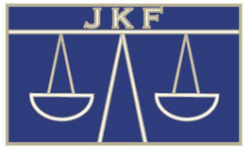When are individual shareholders liable for the acts of a corporation? The Alter Ego Doctrine9/19/2013 The alter ego doctrine is used to establish the direct liability of a shareholder or owner when the shareholder or owner improperly uses the corporate entity to commit acts which harm the corporation itself, or third persons involved with the corporation.
Despite the common thinking that shareholders are immune from the debts and obligations of a corporation, sometimes, in extraordinary circumstances, those shareholders can be made to answer for the corporate debts. It is a long held rule of law in California that the courts must recognize the limited liability afforded by the corporate entity. However, in certain circumstances where equity dictates, the courts may, upon a substantial showing of facts, find an exception to the rule. That exception is called the alter-ego doctrine. The first case which deviated from the ordinary rule of separate corporate existence was decided in 1921 by the California Supreme Court in Minifie v. Rowley.[1] There, the Court set forth the elements required to be present in order for the shareholders to be made liable for corporate obligations. The Minifie holding formed the basis for the alter-ego doctrine which has been evolving into a substantial body of law ever since. BASICS OF THE EXCEPTION TO THE RULE Under the alter-ego doctrine, when the corporate form is used to perpetuate a fraud, circumvent a statute, or accomplish some other wrongful or inequitable purpose, the courts may disregard the corporate entity and hold its individual shareholders liable for the actions of the corporation. “The separate personality of the corporation is a statutory privilege, and it must be used for a legitimate business purpose and must not be perverted. When it is abused it will be disregarded and the corporation looked at as a collection or association of individuals.”[2] The alter-ego doctrine is intended to prevent individuals or other corporations from misusing the corporate laws by the device of a sham corporate entity formed for the purpose of committing fraud or other misdeeds. In California, there is no litmus test for applying the alter-ego doctrine remedy; however, the courts have consistently stated that there are two general requirements for application of the alter ego doctrine:
The test is easy to state, but courts have found it difficult to apply. While the test is consistently stated, most cases have avoided formulas and tests and relied instead on the discretion of the trial court. SHOWING UNITY OF INTEREST Those factors tending to show a “unity of interest” are as follows: 1. Commingling of funds and assets. 2. Failure to segregate funds. 3. Diversion of funds or assets. 4. Treatment by shareholder of corporate assets as own. 5. Failure to maintain minutes. 6. Identical equitable ownership in two entities. 7. Officers and Directors of one entity same as controlled corporation. 8. Use of the same office or business location. 9. Employment of same employees. 10. Total absence of corporate assets. 11. Under-capitalization. 12. Use of Corporation as mere shell. 13. Instrumentality or conduit for single venture of another corporation. 14. Concealment or misrepresentation of the responsible ownership, management and financial interests. 15. Concealment or misrepresentation of personal business activities. 16. Disregard of legal formalities. 17. Failure to maintain arms length relationships among related equities. 18. The use of the corporate identity to procure labor, services or merchandise for another entity. 19. The Diversion of assets from a corporation by or to a stockholder or other person or entity to the detriment of creditors. 20. The manipulation of corporate assets and liabilities in entities so as to concentrate the assets in one and the liabilities in another. 21. The contracting with another with the intent to avoid performance by use of the corporation entity as a shield against personal liability. 22. The use of the corporation as subterfuge for illegal transactions. 23. The formation and use of a corporation to transfer to it the existing liability. In considering the factors on this list, appellate courts have held no one factor is conclusive. It is within the trial court’s discretion to consider the presence or absence of any of these factors or other relevant circumstances. DEMONSTRABLE INEQUITABLE RESULT A Plaintiff may not prevail on the theory of alter-ego unless he/she/it proves to the Court that an inequitable result will occur if the Court recognizes the corporate form over the substance and nature of the injury. The doctrine does not depend upon the presence of actual fraud, but is designed to prevent what would be fraud or an injustice. Accordingly, bad faith, in one form or another, is an underlying consideration. Without a showing of wrongdoing, violation of statute or evidence of injustice, the alter-ego exception cannot be employed by the Court as a remedy. The essence of the alter-ego doctrine is that justice be done. Although courts have considered many factors in justifying its application, their basic motivation is to assure a just and equitable result. CONCLUSION 1. The Alter-ego doctrine is an exception to the rule. 2. The Alter-ego doctrine is an equitable remedy to prevent injustice. 3. The Court is never required to employ the Alter-ego doctrine. 4. The doctrine may only be employed on a case by case basis depending on the facts. 5. Alter-ego liability is a question of fact, not law. 6. Because the exception arises as an equitable remedy and not a cause of action, there is no right to a jury trial. [1] Minifie v. Rowley, (1921) 87 Cal. 481, 202 P. 673. [2] In re: International Cab Company, No. Dist Court, Bank 98-30535 WDM.
0 Comments
Leave a Reply. |
Blog On Current Legal MattersBy Jason K. FeldmanArchives
February 2016
|
Location270 N. Canon Drive, 3rd Fl.
Beverly Hills, CA 90210 |
Contact UsTel: 844-JKF-LEGAL (844-553-5342)
Fax: 310-564-2004 |
 RSS Feed
RSS Feed
